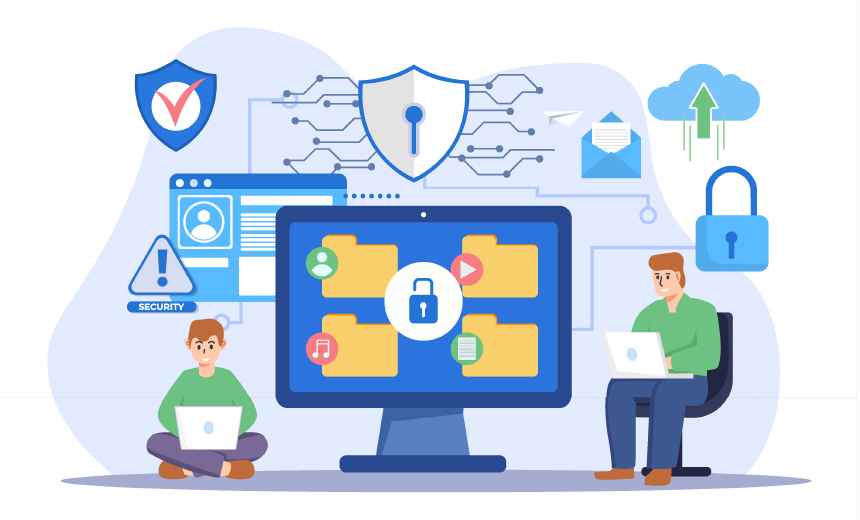Navigating the digital economy: Innovation, risk, and opportunity

As we move towards the era of Industry 5.0, Digital Economy needs to adopt Human
Centred Design (HCD) approach where technology layers revolve around the Human’s
as the core. By 2030, it is envisaged to have Organoid Intelligence (OI) to rule
the digital economy space with its potential across multi-disciplines with Super
Intelligent capabilities. This capability shall democratize digital economy
services across sectors in a seamless manner. This rapid technology adoption
exposes the system to cyber risks which calls for advanced future security
solutions such as Quantum Security embedded with digital currencies such as
e-Rupee, crypto-currency, etc. ‘e-rupee’, a virtual equivalent of cash stored in
a digital wallet, offers anonymity in payments. ... Indian banks are already
piloting blockchain for issuing Letters of Credit, and integrating UPI with
blockchain could combine the strengths of both systems, ensuring greater
security, ease of use, and instant transactions. Such cyber security threats,
also create opportunity for Bit-coin or Crypto-currencies to expand from its
current offering towards sectors such as gaming, etc.
From DevOps to Platform Engineering: Powering Business Success

Platform engineering provides a solution with the tools and frameworks needed to
scale software delivery processes, ensuring that organizations can handle
increasing workloads without sacrificing quality or speed. It also leads to
improved consistency and reliability. By standardizing workflows and automating
processes, platform engineering reduces the variability and risk associated with
manual interventions. This leads to more consistent and reliable deployments,
enhancing the overall stability of applications in production. Further
productivity comes from the efficiency it offers developers themselves.
Developers are most productive when they can focus on writing code and solving
business problems. Platform engineering removes the friction associated with
provisioning resources, managing environments, and handling operational tasks,
allowing developers to concentrate on what they do best. It also provides the
infrastructure and tools needed to experiment, iterate, and deploy new features
rapidly, enabling organizations to stay ahead of the curve.
Scaling Databases To Meet Enterprise GenAI Demands

A hybrid approach combines vertical and horizontal scalability, providing
flexibility and maximizing resource utilization. Organizations can begin with
vertical scaling to enhance the performance of individual nodes and then
transition to horizontal scaling as data volumes and processing demands
increase. This strategy allows businesses to leverage their existing
infrastructure while preparing for future growth — for example, initially
upgrading servers to improve performance and then distributing the database
across multiple nodes as the application scales. ... Data partitioning and
sharding involve dividing large datasets into smaller, more manageable pieces
distributed across multiple servers. This approach is particularly beneficial
for vector databases, where partitioning data improves query performance and
reduces the load on individual nodes. Sharding allows a vector database to
handle large-scale data more efficiently by distributing the data across
different nodes based on a predefined shard key. This ensures that each node
only processes a subset of the data, optimizing performance and
scalability.
Safeguarding Expanding Networks: The Role of NDR in Cybersecurity
NDR plays a crucial role in risk management by continuously monitoring the
network for any unusual activities or anomalies. This real-time detection
allows security teams to catch potential breaches early, often before they can
cause serious damage. By tracking lateral movements within the network, NDR
helps to contain threats, preventing them from spreading. Plus, it offers deep
insights into how an attack occurred, making it easier to respond effectively
and reduce the impact. ... When it comes to NDR, key stakeholders who benefit
from its implementation include Security Operations Centre (SOC) teams, IT
security leaders, and executives responsible for risk management. SOC teams
gain comprehensive visibility into network traffic, which reduces false
positives and allows them to focus on real threats, ultimately lowering stress
and improving their efficiency. IT security leaders benefit from a more robust
defence mechanism that ensures complete network coverage, especially in hybrid
environments where both managed and unmanaged devices need protection.
Application detection and response is the gap-bridging technology we need

In the shared-responsibility model, not only is there the underlying cloud
service provider (CSP) to consider, but there are external SaaS integrations
and internal development and platform teams, as well as autonomous teams
across the organization often leading to opaque systems with a lack of clarity
around where responsibilities begin and end. On top of that, there are
considerations around third-party dependencies, components, and
vulnerabilities to address. Taking that further, the modern distributed nature
of systems creates more opportunities for exploitation and abuse. One example
is modern authentication and identity providers, each of which is a potential
attack vector over which you have limited visibility due to not owning the
underlying infrastructure and logging. Finally, there’s the reality that we’re
dealing with an ever-increasing velocity of change. As the industry continues
further adoption of DevOps and automation, software delivery cycles continue
to accelerate. That trend is only likely to increase with the use of
genAI-driven copilots.
Data Is King. It Is Also Often Unlicensed or Faulty

A report published in the Nature Machine Intelligence journal presents a
large-scale audit of dataset licensing and attribution in AI, analyzing over
1,800 datasets used in training AI models on platforms such as Hugging Face.
The study revealed widespread miscategorization, with over 70% of datasets
omitting licensing information and over 50% containing errors. In 66% of the
cases, the licensing category was more permissive than intended by the
authors. The report cautions against a "crisis in misattribution and informed
use of popular datasets" that is driving recent AI breakthroughs but also
raising serious legal risks. "Data that includes private information should be
used with care because it is possible that this information will be reproduced
in a model output," said Robert Mahari, co-author of the report and JD-PhD at
MIT and Harvard Law School. In the vast ocean of data, licensing defines the
legal boundaries of how data can be used. ... "The rise in restrictive data
licensing has already caused legal battles and will continue to plague AI
development with uncertainty," said Shayne Longpre, co-author of the report
and research Ph.D. candidate at MIT.
AI interest is driving mainframe modernization projects

AI and generative AI promise to transform the mainframe environment by
delivering insights into complex unstructured data, augmenting human action
with advances in speed, efficiency and error reduction, while helping to
understand and modernize existing applications. Generative AI also has the
potential to illuminate the inner workings of monolithic applications, Kyndryl
stated. “Enterprises clearly see the potential with 86% of respondents
confirmed they are deploying, or planning to deploy, generative AI tools and
applications in their mainframe environments, while 71% say that they are
already implementing generative AI-driven insights as part of their mainframe
modernization strategy,” Kyndryl stated. ... While AI will likely shape the
future for mainframes, a familiar subject remains a key driver for mainframe
investments: security. “Given the ongoing threat from cyberattacks, increasing
regulatory pressures, and an uptick in exposure to IT risk, security remains a
key focus for respondents this year with almost half (49%) of the survey
respondents cited security as the number one driver of their mainframe
modernization investments in the year ahead,” Kyndryl stated.
How AI Is Propelling Data Visualization Techniques
.jpg?width=1280&auto=webp&quality=95&format=jpg&disable=upscale)
AI has improved data processing and cleaning. AI identifies missing data and
inconsistencies, which means we end up with more reliable datasets for
effective visualization. Personalization is yet another benefit AI has
brought. AI-powered tools can tailor visualizations based on set goals,
context, and preferences. For example, a user can provide their business
requirements, and AI will provide a customized chart and information layout
based on these requirements. This saves time and can also be helpful when
creativity isn’t flowing as well as we’d like. ... It’s useful for geographic
data visualization in particular. While traditional maps provide a top-down
perspective, AR mapping systems use existing mapping technologies, such as
GPS, satellite images, and 3D models, and combine them with real-time data.
For example, Google’s Lens in Maps feature uses AI and AR to help users
navigate their surroundings by lifting their phones and getting instant
feedback about the nearest points of interest. Business users will appreciate
how AI automates insights with natural language generation (NGL).
Framing The Role Of The Board Around Cybersecurity Is No Longer About Risk
Having set an unequivocal level of accountability with one executive for
cybersecurity, the Board may want to revisit the history of the firm with
regards to cyber protection, to ensure that mistakes are not repeated, that
funding is sufficient and overall, that the right timeframes are set and
respected, in particular over the mid to long-term horizon if large scale
transformative efforts are required around cybersecurity. We start to see a
list of topics emerging, broadly matching my earlier pieces, around the “key
questions the Board should ask”, but more than ever, executive accountability
is key in the face of current threats to start building up a meaningful and
powerful top-down dialogue around cybersecurity. Readers may notice that I
have not used the word “risk” even once in this article. Ultimately, risk is
about things that may or may not happen: In the face of the “when-not-if”
paradigm around cyber threats – and increasingly other threats as well – it is
essential for the Board to frame and own business protection as a topic rooted
in the reality of the world we live in, not some hypothetical matter which
could be somehow mitigated, transferred or accepted.
Embracing First-Party Data in a Cookie-Alternative World

Unfortunately, the transition away from third-party cookies presents
significant challenges that extend beyond shifting customer interactions. Many
businesses are particularly concerned about the implications for data security
and privacy. When looking into alternative data sources, businesses may
inadvertently expose themselves to increased security risks. The shift to
first-party data collection methods requires careful evaluation and
implementation of advanced security measures to protect against data breaches
and fraud. It is also crucial to ensure the transition is secure and compliant
with evolving data privacy regulations. To ensure the data is secure,
businesses should go beyond standard encryption practices and adopt advanced
security measures such as tokenization for sensitive data fields, which
minimizes the risk of exposing real data in the event of a breach.
Additionally, regular security audits are crucial. Organizations should
leverage automated tools for continuous security monitoring and compliance
checks that can provide real-time alerts on suspicious activities, helping to
preempt potential security incidents.
Quote for the day:
“It's not about who wants you. It's
about who values and respects you.” -- Unknown
No comments:
Post a Comment